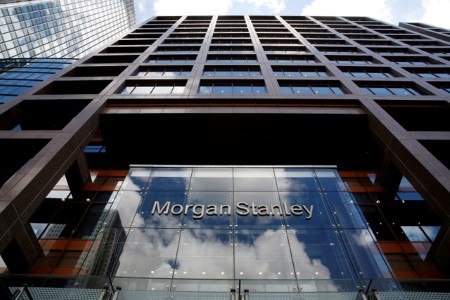




Monthly Economic Update: One for the road
 DOWNLOAD
DOWNLOAD

Inflation Update: Still low, still slow
 DOWNLOAD
DOWNLOAD

Philippines Trade Update: Exports momentum continues
 DOWNLOAD
DOWNLOAD


US bank preferred capital issuance makes a tentative comeback

July 28 (Reuters) – Investor appetite for a type of debt issued mostly by banks to boost their capital is showing early signs of revival, just as interest rates on an estimated USD 120 billion of such securities are due to reset to much higher levels.
So-called preferred securities, which are one of the riskiest forms of debt but also have some characteristics of stocks, are popular among banks as a way to boost their capital for regulatory purposes.
Typically, these securities have no maturity date, but they can be redeemed, or called, in five or 10 years from the date they were issued. If they are not called, the rate resets to a new fixed or floating rate.
More than USD 160 billion of preferreds were issued in 2020 and 2021 each, when rates were low. Volume dropped last year to USD 70 billion as the US Federal Reserve embarked on an interest rate hiking cycle. Then, in March, the US regional banking crisis and the collapse of Credit Suisse effectively shut the market. In the sale of the Swiss lender to rival UBS Group UBSG.S, the European equivalent of preferreds was fully written down.
The market since has been reopening. When Wells Fargo & Co WFC.N issued a new public preferred security earlier this month, investor demand far outweighed supply. That came on the heels of improving investor sentiment about the debt.
Spreads – or difference between the yields of these securities and Treasury bonds – have tightened by 60 basis points from the height of the banking crisis in March.
Some bankers now expect more deals, primarily from US banks, which have billions of dollars of preferreds coming up for redemption.
“There is a better understanding of the risk entailed in these preferred structures after Credit Suisse and recent regional bank failures, so investors are showing more appetite for these securities,” said Daniel Botoff, global head of debt capital markets syndicate at RBC Capital Markets.
Allie Quine, a vice president and portfolio specialist at fund manager Cohen & Steers, one of the biggest investors in preferreds, said they saw buying opportunities, with prices more attractive than their long-term averages.
The revival of this market is key ahead of new capital requirements being imposed on banks. On Thursday, US regulators unveiled details of an overhaul of capital rules that would direct banks to set aside billions more to guard against risk.
To be sure, some analysts said uncertainty about the Fed’s interest rate outlook and continued caution among investors would keep a lid on new supply, which is unlikely to reach levels seen in 2020 and 2021. The impact of new regulations, which are being finalized, will also take time to be felt.
“Any new issuance will likely be targeted towards refinancing more expensive floating-rate securities within their call windows,” Quine said. “Net new issuance will generally remain limited depending on need.”
WELLS DEAL
Earlier this month, Wells Fargo sold the first public preferreds since the regional banking crisis. The USD 1.725 billion deal received orders of over USD 6 billion, bringing total issuance for the year to USD 37 billion.
If Wells Fargo had not redeemed its outstanding securities, it would have had to pay a coupon of almost 9% for life on its older preferreds, up from just 5.85% until they became callable. Its new preferreds pay a fixed coupon of 7.625%.
In the next six months, some USD 119 billion of preferreds are reaching their call date, according to data from Informa Global Markets. That tally includes those issued by not just US and European banks but also finance, insurance firms, and other companies.
It also includes securities that have already passed their call dates and were paying a spread of as much as 400 basis points over a floating rate benchmark, like the Secured Overnight Financing Rate, which could keep increasing as the Fed hikes rates further.
RBC’s Botoff said many of the large US banks have as much as USD 20 billion of old preferred deals that need to be redeemed or extended into more expensive floating rate coupons. “The tone and support for refinancing have improved substantially over the last few weeks,” he added.
(Reporting by Shankar Ramakrishnan in New York; Editing by Paritosh Bansal and Matthew Lewis)
This article originally appeared on reuters.com





 By Reuters
By Reuters